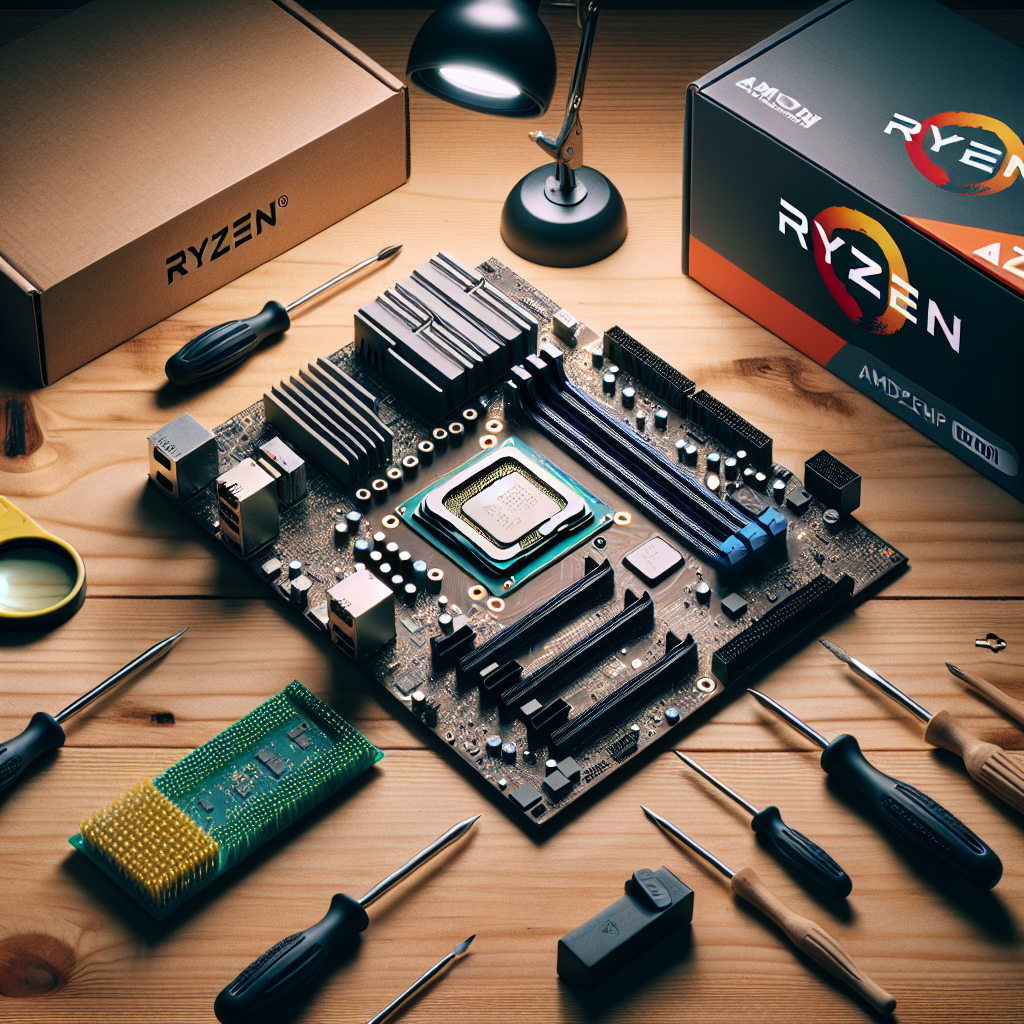AMD's APU Armada: A Deep Dive into the Ryzen 7000G Series
The dawn of AMD's latest APU launch has sent ripples through the tech community, delivering a fresh wave of excitement and speculation. AMD's Ryzen 7000G series, with its integrated graphics and robust computing capabilities, appears to be a game-changer in the realm of processors. But does it live up to the hype? Let’s unscrew the heatsink, peel off the thermal paste, and dive deep into the heart of AMD's new silicon beasts.
Unboxing the Beast
First off, the Ryzen 7000G series is not just another processor launch; it's AMD's bold statement in a market craving innovation. With models spanning the Ryzen 3, 5, and 7 tiers, these APUs spotlight AMD's commitment to diversifying its CPU offerings. Each unit comes with a "modest" cooler—a necessary companion for their 65W TDP. The thermal paste, though thinner and lighter, hints at AMD’s attention to detail for optimal thermal performance.
The promise of AMD with these units is clear: bring high-grade performance and integrated graphics into a monolithic silicon die. But beyond the physical unboxing, it's the performance that truly unpacks AMD's ambition.
A Closer Look at Performance
The Ryzen 7000G series touts a fascinating proposition: the robustness of Ryzen cores combined with the versatility of integrated graphics. The question is, how does this fare in the real world?
The standout feature is the APUs' monolithic design, reducing memory latency significantly—a critical factor in both computing and graphical tasks. This design choice represents a significant leap forward, potentially bridging the gap between dedicated CPU and GPU units for a vast array of users.
Benchmarking reveals the Ryzen 7000G's prowess. With setups pushing the RAM to the limits of DDR5 speeds, these chips showcase remarkable synergy with high-speed memory, highlighting the architectural advancements AMD has made. The benchmarks, especially in gaming scenarios, reveal that these APUs are not just about bringing integrated graphics up a notch; they're about reshaping what integrated graphics can be.
For links to additional in-depth information on AMD Ryzen APUs and DDR5 technology, please visit:
- AMD's official Ryzen page: https://www.amd.com/en/processors/ryzen
- An overview of DDR5 memory advancements: https://www.tomshardware.com/features/ddr5-ram-faq
Gaming on Integrated Graphics: A New Dawn?
Traditionally, gaming on integrated graphics has been akin to bringing a knife to a gunfight. However, the Ryzen 7000G series could be changing that narrative. In benchmarks across titles like Borderlands 3 and Shadow of the Tomb Raider, the APUs demonstrated not just playable, but enjoyable performance at 1080p on low settings. This is a testament to AMD's engineering, pushing what's possible on an APU far beyond what has been traditionally expected.
Yet, it's not all sunshine and rainbows. Gaming at higher settings or resolutions quickly reveals the limitations of integrated graphics. Even with advanced memory configurations, there's a ceiling to what can be achieved without a dedicated GPU. But for casual gamers or those on a tight budget, AMD's new offerings present a compelling proposition.
The Competitive Landscape
When comparing AMD's integrated solutions to Intel's current offerings, the gap is significant. Intel has made strides with its Iris Xe graphics, yet AMD's Ryzen 7000G series appears to be in a league of its own, especially in terms of gaming performance. This competitive edge underscores AMD's focus on leading through innovation, whether in the traditional CPU space or in the realm of integrated graphics.
But the game is far from over. Intel's roadmap suggests ambitious plans, and with the tech world's rapidly evolving nature, today's leader can easily become tomorrow's runner-up. AMD's current triumph with the 7000G series is a formidable statement but maintaining that lead requires constant innovation and adaptation.
The Verdict: A Paradigm Shift or a Promising Step?
AMD's Ryzen 7000G series undeniably marks a significant milestone in the APU landscape. It blurs the lines between dedicated CPUs and GPUs, offering a glimmer of a future where the distinction might become increasingly irrelevant for a broader range of users.
However, as groundbreaking as these APUs are, they are not a one-size-fits-all solution. For hardcore gamers and professionals relying on heavy graphical workloads, a dedicated GPU remains irreplaceable. But for the average consumer, AMD's integrated graphics solution proposes an enticing blend of performance and value.
In conclusion, while the Ryzen 7000G series might not herald an immediate paradigm shift, it undoubtedly represents a promising step toward a future where computing and graphics coalesce more seamlessly. As AMD continues to refine its APU offerings, the tech community eagerly awaits what's next on the horizon. With such innovation, it's an exciting time to be a PC enthusiast.
Related News
- Navigating the Murky Waters of Modern Computing: Intel's Snags and AMD's Momentum
- Zen and the Art of Microprocessor Dominance: AMD's Next Era in Gaming CPUs
- AMD's Hail Mary in AI and Mobile Computing: A Revolution or a Calculated Gambit?
- The Intriguing State of Silicon: AMD and Intel's Ongoing Dance
- The Evolving Landscape of GPU Technology: A Zesty Take on Recent Developments
